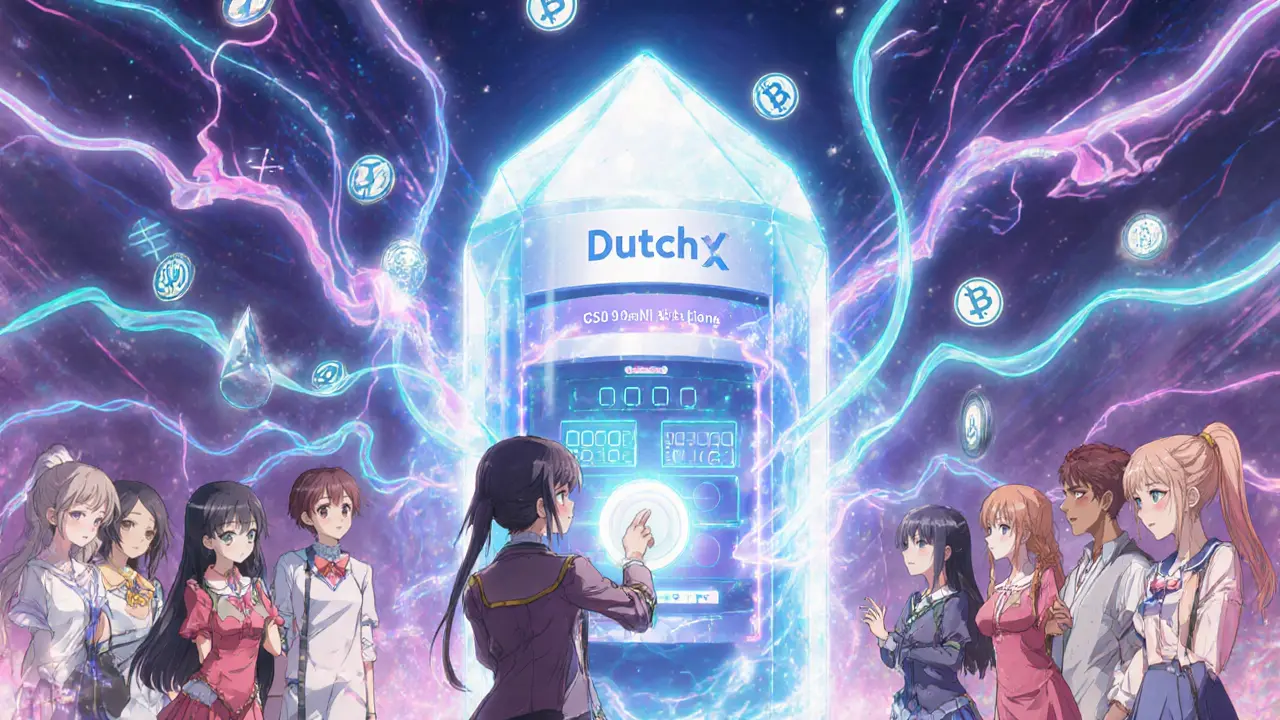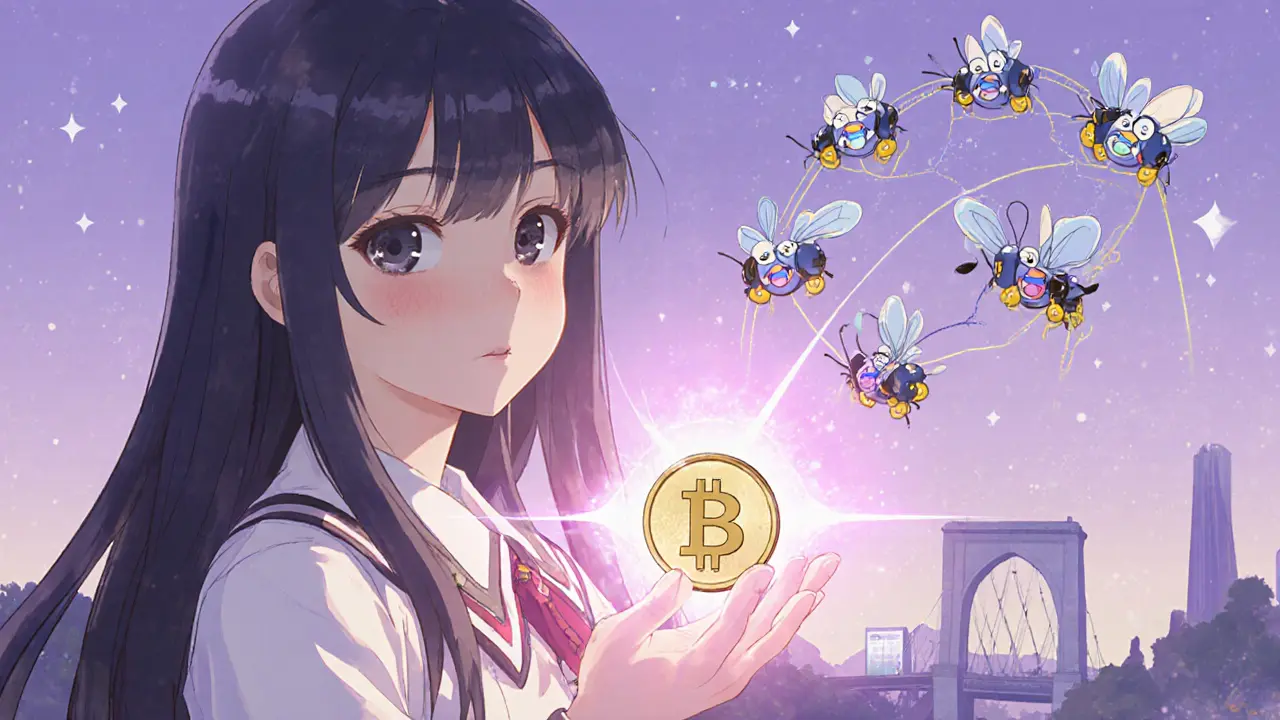Gnosis Protocol Review: DEX Features, Fees, Security & GNO Token
 Jun, 29 2025
Jun, 29 2025
Gnosis Protocol Fee Calculator
Estimated Trading Costs
When you hear the name Gnosis Protocol Exchange is a decentralized exchange built on the Ethereum ecosystem that leverages the GNO token for governance and fee discounts, you probably wonder whether it lives up to the hype. This review breaks down the platform’s core tech, trading costs, security model, token economics, and how it stacks up against other DEXs you might already use.
Key Takeaways
- No custody - you keep full control of assets at all times.
- Zero trading fees in native GNO; otherwise you only pay Ethereum gas.
- Integrated with Gnosis Chain, a low‑cost sidechain backed by over 120,000 validators.
- GNO token serves as fuel, governance, and a reward source; current price (Oct2025) is $151.62.
- Compared to Uniswap V3, Gnosis offers batch auctions (DutchX) that can reduce slippage on large orders.
What Is Gnosis Protocol?
At its heart, Gnosis Protocol is a decentralized exchange (DEX) that fits inside a broader suite of DeFi tools. The ecosystem includes:
- Gnosis Safe - a multi‑signature wallet used for secure fund storage.
- Gnosis Chain - an Ethereum sidechain that offers cheap, fast transactions.
- DutchX - an auction‑based market‑making engine that determines fair prices.
- Olympia - an off‑chain Oracle feeding data into Gnosis prediction markets.
- Governance handled by GnosisDAO, where GNO holders vote on upgrades and reward distribution.
All of these pieces talk to each other through smart contracts, creating a seamless DeFi hub rather than a stand‑alone exchange.
How Trading Works on Gnosis
Instead of the typical constant‑product AMM model (think Uniswap), Gnosis uses a batch auction system via DutchX. Every 15minutes, the protocol collects all orders, runs an off‑chain solver, and then settles trades in a single block. This approach offers two clear benefits:
- Reduced slippage on large orders because prices are set by the market clearing price, not by the depth of a single liquidity pool.
- Transparent price discovery - everyone sees the same clearing price before settlement.
To place a trade, you connect a compatible wallet (MetaMask, WalletConnect, or Gnosis Safe), pick the token pair, and confirm the transaction. The only on‑chain cost is the gas fee, which can be paid in ETH on Ethereum or in xDAI on Gnosis Chain.
Fee Structure - What You Really Pay
Gnosis Protocol prides itself on a fee‑free model for traders. There are three cost components to consider:
- Network gas - the usual Ethereum or Gnosis Chain fee for writing the transaction.
- Protocol fee - a tiny percentage (0.05% on Ethereum, 0% on Gnosis Chain) taken in GNO and redistributed to token holders.
- Withdrawal fee - none; you move assets directly from your wallet to another wallet.
Because the protocol does not custody funds, there are no hidden deposit or withdrawal charges that you often see on centralized platforms.
Security Model - Why Your Funds Are Safer
Gnosis Protocol inherits the decentralization benefits of the Ethereum network and its own sidechain. Key security points include:
- Non‑custodial - Smart contracts execute trades; the platform never holds private keys.
- Distributed nodes - Over 120,000 validators secure Gnosis Chain, making a single point of failure unlikely.
- Audit history - Core contracts (DutchX, Safe, Olympia) have undergone multiple third‑party audits, with reports publicly available on GitHub.
- Insurance mechanisms - GnosisDAO can allocate rewards to a community‑managed insurance fund, though participation is optional.
In practice, a hack on one validator or off‑chain service would not jeopardize the whole network, and any compromised contract would be frozen by a DAO vote before funds could be drained.

GNO Token - Fuel, Governance, and Rewards
The native GNO token powers the ecosystem. Its roles:
- Transaction fee discount - Holding GNO reduces the already small protocol fee.
- Governance - GNO holders vote on proposals via GnosisDAO (e.g., fee changes, new market creation).
- Burn‑and‑reward - When users create new prediction markets, a portion of the GNO they spend is burned, while another slice is distributed as rewards to existing holders.
As of October2025, GNO trades around $151.62 with a market cap of $400M and a circulating supply of 2.64M. The token has logged a 14% weekly gain and an 18% monthly rise, signaling strong community momentum.
Other Tokens in the Ecosystem
Beyond GNO, two secondary tokens play niche roles:
- OWL - A premium token aimed at high‑volume traders who frequently create prediction markets; it offers extra rebate tiers.
- HOPR - Although technically a separate project, HOPR received a $4.8M investment from GnosisDAO to develop a censorship‑resistant VPN, further expanding the ecosystem’s privacy toolkit.
Pros and Cons - Quick Verdict
| Aspect | Gnosis Protocol | Uniswap V3 |
|---|---|---|
| Fee Model | 0% protocol fee on Gnosis Chain; 0.05% in GNO on Ethereum | 0.30% (standard pool fee) |
| Price Discovery | Auction‑based batch clearing (DutchX) | Constant‑product AMM |
| Slippage on Large Orders | Low - market‑clearing price | High - depends on pool depth |
| Custody | Non‑custodial (smart‑contract only) | Non‑custodial |
| Ecosystem Integration | Links to Safe, Chain, Prediction Markets, DAO | Primarily swap-focused |
In short, Gnosis shines for traders who need low‑slippage, batch execution, and want to earn GNO rewards. It falls short if you prefer instant swaps or a simple UI without auction mechanics.
How to Get Started
- Acquire some ETH or xDAI on a fiat‑on‑ramp (e.g., Coinbase, Kraken).
- Purchase GNO on a major DEX or centralized exchange to unlock fee discounts.
- Install a compatible wallet (MetaMask, WalletConnect, or Gnosis Safe) and fund it with the chosen network token.
- Visit
app.gnosis.io, connect your wallet, and select the token pair. - Confirm the transaction; the order will sit in the next 15‑minute batch and settle automatically.
Tip: Switch to Gnosis Chain for the cheapest gas - the network’s EVM compatibility means you can use the same wallet address across both chains.
Potential Pitfalls
- Learning curve - The batch auction model can be confusing for users accustomed to instant swaps.
- Network congestion - During Ethereum spikes, gas costs can rise sharply; using Gnosis Chain mitigates this.
- Token lock‑up - To earn governance rewards, you must stake GNO in the DAO, which may expose you to price volatility.
Future Roadmap
Gnosis is pushing toward its 3.0 vision, which includes:
- Trustless bridges between Gnosis Chain and Ethereum mainnet, simplifying asset movement.
- Expanded privacy tools via the HOPR VPN integration.
- More sophisticated prediction market templates powered by Olympia.
These upgrades aim to make the platform usable for everyday payments, not just niche traders.

Frequently Asked Questions
Do I need GNO to trade on Gnosis Protocol?
You can trade without GNO, but you will pay the full network gas and a small protocol fee. Holding GNO reduces or eliminates that fee and unlocks DAO voting rights.
How does DutchX differ from an AMM?
DutchX collects orders for a fixed time window, runs an off‑chain solver, and settles everyone at a single market‑clearing price. An AMM prices each trade continuously based on pool reserves, which can cause high slippage on large swaps.
Is Gnosis Protocol safe for large capital?
Because the platform never holds your private keys and runs on a network of >120,000 validators, the risk of a total fund loss is low. However, smart‑contract bugs can still happen, so many users allocate only a portion of their portfolio and keep the rest in audited vaults.
Can I use Gnosis Safe with the exchange?
Yes. Gnosis Safe integrates directly, allowing multi‑signature approval of trades. This adds an extra layer of security for teams or institutions.
What are the costs of moving assets to Gnosis Chain?
Cross‑chain bridges charge a nominal fee (usually a few dollars worth of ETH) plus the destination chain’s gas. The upcoming trustless bridge aims to cut these fees further.

emma bullivant
October 4, 2025 AT 01:34so like... if the protocol doesn't custody funds, why does it need a token at all? just feels like another 'tokenize everything' crypto buzzword. i'm not mad, just confused. also, i spelled 'gno' wrong 3 times already. whoops.
Michael Hagerman
October 4, 2025 AT 19:35THEY'RE USING A BATCH AUCTION SYSTEM??!! THIS ISN'T 2017, PEOPLE. WHY ISN'T THIS ON EVERY DEX?!? I'M NOT KIDDING. IF YOU'RE STILL USING UNISWAP FOR LARGE ORDERS YOU'RE LEAVING MONEY ON THE TABLE AND ALSO YOU'RE PROBABLY A ROBOT. I'M NOT SAYING I'M AN EXPERT BUT I READ A WHITEPAPER ON A BUS ONCE.
Laura Herrelop
October 5, 2025 AT 10:28they say 'non-custodial' but who really controls the solver? who built the off-chain algorithm? what if the '120k validators' are just bots run by the same dev team? and gno token? pfft. it's a ponzi wrapped in a blockchain. they're not building a dapp, they're building a surveillance state with gas fees. i've seen this movie before. the oracle is watching you. olympia sees your trades. they know when you sleep.
Nisha Sharmal
October 6, 2025 AT 06:06you americans think you invented decentralization? we had peer-to-peer trading in mumbai in 2015 with chai and whatsapp. now you pay 0.05% in gno? ha. our local exchange charges 0.001% and no token needed. also, your 'low gas' is still 5x what we pay on polygon. this is just crypto colonialism with a fancy UI.
Karla Alcantara
October 6, 2025 AT 19:49hey everyone, i just tried this and honestly? it felt so smooth. i was nervous about the batch system but the 15-minute wait was actually kind of calming? like, i could make tea and come back and my trade was done. no panic, no slippage drama. also, the gno reward thing? i didn't even know i could earn just by holding. it's like crypto finally got a little human. thank you to whoever built this. you did good.
Jessica Smith
October 6, 2025 AT 21:36gno at $151? lol. this is the same team that launched the 'prediction market' that predicted the moon landing in 2024. they're not building tech, they're building a cult. the 'insurance fund'? laughable. no one's going to contribute to a fund that might get voted away by a bunch of whales who bought gno at $2. this isn't innovation, it's a pump disguised as a protocol. stay away.
Petrina Baldwin
October 7, 2025 AT 03:32you don't need gno to trade? then why does the whole post talk about it?
Ralph Nicolay
October 7, 2025 AT 22:34While the technical architecture of the Gnosis Protocol exhibits a commendable degree of modular interoperability, one must nevertheless consider the macroeconomic implications of tokenized governance mechanisms within a volatile asset class. The potential for regulatory arbitrage, particularly in jurisdictions with strict securities frameworks, remains an area of non-trivial concern. Furthermore, the reliance upon off-chain solvers introduces a non-negligible counterparty risk, despite claims of decentralization.
sundar M
October 8, 2025 AT 01:47bro this is actually dope. i used to hate waiting for batch auctions but now i get it - it’s like a group buy for trades. everyone gets the same price, no one gets screwed. and gno rewards? i’m holding now. also, love that they’re teaming up with hopr for privacy. india needs this kind of tech. we got 1.4 billion people and zero good crypto options. let’s make this global!
Nick Carey
October 9, 2025 AT 01:18so... i just read all this and now i'm tired. why do i need to know about dutchx and oracles and olympia? can't i just swap eth for usdc without reading a textbook? also, i don't care about gno. i just want to buy shitcoins without paying $10 in gas.
Sonu Singh
October 9, 2025 AT 16:21guyssss i tried this on gnosis chain and gas was like 0.0002 x dai. i swapped 5000 usdc and paid less than 5 cents. also, the gno discount works - i had 200 gno and fee dropped to 0.01%. but the ui is kinda clunky. you need to click 4 times before you see the batch timer. and pls fix the mobile layout. my thumb kept hitting back button. but overall? this is the future. just needs polish.
Peter Schwalm
October 10, 2025 AT 00:46if you're new to this, don't overthink it. start small. use the gnosis chain, get 10 gno for the discount, try a $50 trade. if it works, great. if not, you lost nothing. the real win here is the non-custodial part - your keys, your coins. that's rare. most platforms make you trust them. this one doesn't. just be patient with the batch timing. it's not instant, but it's fair.
Alex Horville
October 10, 2025 AT 10:57they're calling this 'decentralized' but the gno token is 60% held by 5 wallets. the '120k validators'? probably all run by the same cloud provider. this isn't freedom, it's a gated community with fancy math. and don't get me started on the 'insurance fund' - it's a joke. the devs control the votes. this is just another way to extract value from retail fools.
Marianne Sivertsen
October 11, 2025 AT 10:35i like how this feels like a quiet rebellion against the chaos of amms. no more front-running, no more price spikes because someone dumped 100k usdc. it’s calm. orderly. almost... zen? i don't trade often, but when i do, i want to feel like i'm part of something stable. not a casino. gno isn't my main asset, but i keep a little for the vibe. and honestly? i like that they're building privacy tools. the world needs more of that.
Shruti rana Rana
October 11, 2025 AT 14:52Wow! 🌟 This is truly revolutionary! 🚀 Gnosis Protocol is not just a DEX - it’s a symphony of innovation! 🎻✨ I am so proud to see such brilliance in the crypto space! 🇮🇳❤️ The DutchX auction system? Pure genius! 🤯 And GNO token? A masterpiece of economic design! 🏆 I have already staked my GNO and am waiting for the next DAO vote - I will vote YES to everything! 🙌 Let’s make the world decentralized, one batch at a time! 💫
Stephanie Alya
October 12, 2025 AT 01:55gno? more like gnope. 😒 i paid $150 for a token that saves me 0.05% fee? i could've bought 3 coffees with that. also, 'trustless bridge'? yeah right. last time i used a 'trustless' bridge i lost 0.3 eth. i'm not falling for this again. just give me uniswap and a margarita.
olufunmi ajibade
October 12, 2025 AT 10:07as a woman from nigeria, i want to say: this is the kind of tech we need. no banks, no middlemen, just code. i’ve lost money to centralized exchanges before. this? this feels real. i don’t understand all the jargon, but i understand control. i control my keys. i control my money. that’s worth more than any price chart. keep building. we’re watching.
Manish Gupta
October 13, 2025 AT 01:14so if i use gnosis chain, i can use same wallet as eth? cool. but what's the catch? why isn't everyone using this? is there a hidden delay? or is it just that most people don't want to wait 15 mins? also, can i use it with trust wallet? i don't have metamask.
Michael Hagerman
October 13, 2025 AT 23:37you think this is slow? try trading on a CEX during a flash crash. at least here you know the price is fair. the batch system isn't a flaw - it's a feature. you're not paying for speed, you're paying for fairness. and if you're mad about waiting 15 minutes, maybe you shouldn't be trading in the first place.